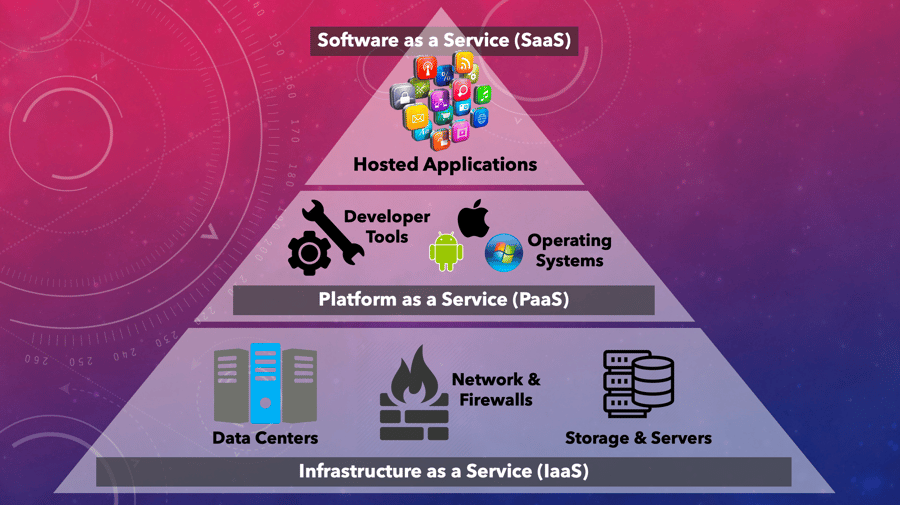
In the age of COVID, how do you 10X your business? And more broadly, in the coming decade, how do you go from a linear ‘old-school’ company to an ‘Exponential Organization’? Today, there is a clear strategy…
An Exponential Organization is one whose impact (or output) is disproportionately large—at least 10X larger—compared to its peers because of the use of new organizational techniques that leverage exponential technologies.
In this blog, I’m exploring how any company, small or large, must be using Software as a service (SaaS) and Artificial Intelligence as a service (AIaaS) across every aspect of its business.
As entrepreneurs, we no longer have a choice. This is an imperative. If you are not fully committed, then please read this blog for the motivation and the mindset you need to enter the post-COVID marketplace with conviction!
Let’s dive in….
(Note: If you like this blog, share it! LinkedIn | Facebook | Twitter | Or send your friends and family to this link to subscribe!)
WHO, Not How...
Dan Sullivan, my coach (and the creator of Strategic Coach) teaches a concept called “WHO, Not How.”
When facing a new challenge or business opportunity, master entrepreneurs don’t figure out how to solve the problem, they identify WHO is best for the job.
Choosing the right “who” frees you to focus on creative problem-solving, new innovations on or within your business model, and what you do best as an entrepreneur. It’s a critical strategy for leveraging yourself at scale.
Historically, a “Who” was always a person on your team, a consultant, an outside company.
But today’s key to SCALE—to creating an Exponential Organization— is a new generation of WHOs: software, and more specifically, Artificial Intelligence.
As an entrepreneur, you no longer need to build out staff and own all the components of your company (or the layers of your stack).
Key Point >>> An explosion of collaborative and always improving “Software as a Service (SaaS)” and “AI as a Service (AIaaS)” providers will deliver what you need, cheaper, faster and better — allowing you to operate as an exponential organization.
And by outsourcing to an externally hosted SaaS product as your new WHO, your capabilities will constantly get better and cheaper, benefiting from the network externalities that result from others utilizing the same software. (See: Benefits of SaaS below.)
Welcome to an era wherein nearly any business problem has a corresponding software or Artificial Intelligence "WHO" that costs you next to nothing, allows you to scale indefinitely, and transforms you from a linear business into an exponential force.
To quote the Four Seasons Hotel… “Systemize the predictable, so you can humanize the exceptional.”
Even in the case of highly complex business processes—manufacturing, client services, HR, hiring, writing marketing copy—rather than building out full-fledged divisions and teams inside your company, it is easier than ever to identify an AIaaS or SaaS platform that will deliver a constantly improving, centrally hosted, YoY strategy without any additional overhead.
Today, more than ever, SMEs can gain a technological advantage over larger competitors in part because of their size, and more importantly, their reliance on the right software WHOs.
Using a call center or help desk SaaS application, for instance, can significantly improve customer loyalty and interactions, thereby boosting revenues.
According to a Zendesk study, for instance, 42 percent of B2C customers purchase more after a good customer service experience, whereas a bad customer service interaction results in 52 percent of customers not buying. An even larger percentage, 59 percent of shoppers who experience personalization think it has a considerable influence on their purchase decision.
Putting these figures to the test, Amazon’s Personalized recommendation system drove a 29 percent increase in sales.
What’s powerful about AI WHOs is that they allow any entrepreneur with a business of any size to scale on top of an always improving software stack. In success, Artificial Intelligence is now your collaborator, not your displacement, allowing you to grow indefinitely without adding headcount and overhead.
So what exactly is SaaS? (some basic background)
A cloud-based service (and subset of cloud computing), a SaaS platform is a centrally hosted application that allows for multiple ‘tenants’ (i.e. business clients) to run software over an internet browser on their own business data and operations.
The beauty of SaaS is that, instead of downloading software to your business network or building it from the ground up with an in-house team, any business (from 5 employees to 500,000) can have access to an iteratively improving, always-learning software application, backed by a full company (the vendor) of software engineers.
Already, SaaS technologies are on track to hit US$85 billion in revenue by year’s end, according to Gartner, marking a 17.8 percent increase from previous years.
Yet SaaS is only a piece of the puzzle (albeit constituting a majority) when it comes to public cloud services as a whole. Projected to reach a market valuation of US$411 billion by 2020, cloud computing also includes Infrastructure-as-a-Service and Platform-as-a-Service.
In general, cloud computing comprises on-demand use of shared computing resources, accessed via a network by multiple clients. And under this umbrella fall three delivery models:
- Infrastructure as a service (IaaS): A domain for system administrators (SysAdmins), IaaS products allow clients to outsource physical or hardware infrastructure to the cloud. Think: data storage and virtualization, remote servers, outsourced networking and firewall services.
- Platform as a service (PaaS): Whereas IaaS provides the sheer hardware infrastructure for companies to scale their data stores and access remote servers, PaaS is a domain for software developers. Typically consisting of operating systems (OS) and developer tools, PaaS products help software engineers build, test, deploy, maintain, and manage every step of the development lifecycle of web applications.
- Software as a service (SaaS): Lastly, SaaS is a domain for end users (or business clients). Offering on-demand, pay-per-use service of an application, SaaS products are accessible anywhere, and entirely platform-independent. As all computing resources responsible for delivering SaaS are managed by the vendor, users can thereby run the program on their own business data to replicate software-driven processes (whether in analytics, decision-making, optimization problems, etc.). As a result, brand new startups and large corporations alike are saved precious human capital and the costly, time-consuming development of in-house software.

Ranging from accounting solutions to inter-team collaboration, SaaS is likely something you’re already familiar with. In fact, you probably use SaaS all the time.
Think of something as basic as email. Today, it would make zero sense for you to build your own email client software, store your own email data, and maintain the infrastructure to send and receive information over the internet.
Instead, you probably connect to Google Mail, for instance, using either Google’s interface or a SaaS layer (think: smart email clients like Superhuman). In turn, that entire application is hosted by Google—the cloud service provider—such that we have no concern about developing the email software or maintaining the infrastructure. We just use it.
Believe it or not, this counts as an example of SaaS, and perhaps one of the most rudimentary.
Other SaaS platforms you’ve likely used include storage applications like Dropbox, Microsoft’s OneDrive, and Google Drive. Or the usual CRM suspects, like HubSpot, SalesForce, and Zoho. Or maybe you use collaboration-promoting SaaS products like Slack and Cisco’s Webex.
But these constitute less than 1 percent of today’s SaaS universe.
And for pretty much any business of any size, if you want to get up and running right now, SaaS is an inevitable and near-indispensable part of the process.
Benefits of SaaS
Cost: As most SaaS platforms involve a pay-as-you-go or pay-per-user (PPU) subscription model, clients can pay only for services they need without the high upfront costs of investing in hardware infrastructure. Relative to the price of hiring a team of top Artificial Intelligence engineers and investing in new software infrastructure, outsourcing to SaaS costs you next to nothing. This makes SaaS particularly attractive for small businesses, now free to compete with far bigger competitors in existing markets.
Speed: The time it takes to build processes and train employees to solve your business problems manually is exorbitant. But why hire in-house software engineers, develop training sets and manual workflows, when you can just outsource these tasks in a fraction of the time? With SaaS (and particularly AIaaS), corporations and SMEs alike can get the use of a sophisticated application in a matter of days or weeks (rather than years).
Particularly as we witness a surge in bandwidth with the rise of 5G, satellite constellations and balloons, SaaS also boasts far faster processing power and scalable data analysis. This significantly reduces the time necessary to complete a project.
Access anywhere: Working remotely? Not near company servers? Want to set up a company with zero physical corporate offices on a virtual campus (think: VirBELA)? No problem! SaaS, MLaaS and soon-to-come convergences with Augmented Reality and 5G are ushering in an era of entirely dematerialized companies that can scale like nobody’s business. Unencumbered by physical constraints or hardware infrastructure, companies built on the backs of SaaS products are granted total geographic freedom to scale, wherever, at whatever speeds, and with remotely hosted operations and workflows.
Positive Network Externalities: One massive benefit of SaaS is that these platforms are characterized by “multi-tenancy.” If we think of SaaS as a leased product, it is technically rented by multiple tenants (business clients), each benefitting from pooled resources at a far lower cost than if each tenant were to build its own “home,” so to speak. In this way, each tenant benefits from the data, insights, and constructive critical feedback of other tenants in the SaaS platform network.
These positive externalities result from multiple use cases and applications, not to mention the suggested improvements from a SaaS vendor’s individual business clients. The developer, in turn, pushes out software updates across the board far more frequently, iteratively, and holistically, benefiting everyone as a result.
Scalability: With a scalable service delivery infrastructure, SaaS platforms allow business clients to adapt their requirements and constraints seamlessly as their product suites, consumer bases, and revenue streams grow.
Security: Just as you no longer need to hire a huge IT department because you can outsource it, the same applies to security. While some might misperceive SaaS as a source of exposure, countless businesses adopt SaaS products precisely because they are more secure. Why hire a cybersecurity team when you can outsource that to a software WHO too?
Always Improving: The most successful SaaS and MLaaS companies are constantly improving their services, reducing their cost, amping up speed, and augmenting new features. And if your SaaS and AIaaS WHOs are always improving, so are you.
The growing ubiquity of SaaS technology has made it mobile, highly scalable, ultra-cheap, and enterprise-ready.
But SaaS itself is old news.
Today, an emerging army of AI WHOs is exploding onto the scene, and entrepreneurs that adopt an automation mindset to leverage these WHOs will be the fastest to scale….
Rise of Artificial Intelligence as a Service (AIaaS) & Case Studies…
In the next decade, SaaS is expanding far beyond even today’s most sophisticated automation tools, soon allowing industrial designers, big pharma players, EdTech companies, and engineers to adopt new AI collaborators in the invention of better auto parts, optimal drug candidates, effective educational tools, and even better algorithms.
SaaS clients’ business intelligence will reach unprecedented insights, enabling any company to make highly individualized predictions about each and every customer, personalizing content, products and the like through AIaaS.
And as AIaaS products help determine best business practices and optimized workflows, a new generation of AI collaborators will even help augment your human capital and intra-company teamwork.
Take the story of American footwear and accessories brand KEEN, which sought out a SaaS solution for customer personalization. Faced with the challenge of making content relevant to consumers and targeting buyers, KEEN adopted Amazon Personalize.
A prime example of MLaaS, Amazon Personalize enables business clients to create individualized recommendations for consumers. By processing and examining company data, it identifies meaningful insights, selects the right algorithms, and trains a personalization model customized to your data.
Perhaps one of the most powerful tools for any B2C company, machine learning for increased customer engagement, product personalization, and targeted content is now at the fingertips of any entrepreneur.
Whether you’re a startup of 12 employees or a traditional corporation struggling to sift through hoards of consumer data, products like Amazon Personalize allow you to apply one of today’s most abundantly data-fueled AI powerhouses to your data without any prior machine learning experience.
For KEEN, this newfound pay-as-you-use capability made a world of difference: after integrating Amazon Personalize, KEEN saw its email click-through rate (CTR) grow a whopping 67 percent over controlled messaging, while recipients’ opt-out rate plunged an equally impressive 36 percent.
But revenue growth figures speak for themselves. Almost immediately, test emails demonstrated a 12.5 percent increase in revenue (versus a messaging control group). And in terms of revenue generated by purchases from KEEN’s Amazon Personalize-driven campaign, per thousand users messaged, the footwear company saw a 49 percent growth.
Or take Observe.ai, a SaaS product designed to augment human customer care workers.
Through natural language processing (NLP), this burgeoning AIaaS company analyzes conversations between human agents and customers. After transcribing each call, Observe’s platform runs sentiment analysis, draws correlations between the support agent’s verbal and behavioral data and the customer’s happiness level, and ultimately determines customer satisfaction.
This data is then used to benchmark top performers and find best practices across teams. Results can even be applied to other discrete use cases, like monitoring compliance in healthcare, where conversations involve sensitive and often legally protected information.
And while the use of sophisticated AI WHOs in creative collaborative roles might seem far off, Autodesk’s Generative Design (alongside other companies, such as ParaMatters) is already cutting to the chase. Helping age-old manufacturers invent unexpected new mechanical designs, Autodesk’s AI WHO has already managed to successfully cut material resources by up to 25 percent for one of its prime clients, manufacturing firm Claudius Peters.
Soon to become an indispensable tool in your company’s transition to exponential growth, today’s MLaaS and tomorrow’s AI WHOs are vital and ready to implement right now.
Part of the near-ubiquitous adoption of cloud computing, SaaS and AIaaS tools absorb complexity, dematerialize a tremendous range of business solutions, assist and collaborate with your human capital, and allow your teams to do what they do best: the uniquely human tasks that require critical thinking, creativity, and bold ideas.
(Note: If you like this blog, share it! | LinkedIn | Facebook | Twitter | Or send your friends and family to this link to subscribe!)
Join Me
(1) Join FutureLoop: Over the past 2 years, I’ve built a machine-learning algorithm that scrapes the world’s news, science journals and social feeds every day to understand how exponential technologies are impacting specific topics & industries. It’s called FutureLoop.
Last month, I launched "FutureLoop Pandemic Special Edition," a daily comprehensive update on the impact of exponential technologies (Artificial Intelligence, Robotics, Drones, Cellular Medicine, CRISPR, Networks & Smart Sensors) on the COVID-19 pandemic.
If you participate, FutureLoop will update you every day on the latest breakthroughs in detection, prevention & cure of the COVID-19. This product is still in Beta, but it’s powerful, high-quality info, and it's free.
Your mindset is your most important tool during this pandemic. Making sure you are consuming the right information is critical to maintaining that mindset. FutureLoop offers "Data-Driven Optimism."
You can subscribe here. It’s free, fun + fast (20 seconds).
(2) Platinum Longevity & Immunity Trip: This August 19-23, 2020 and September 16-20, 2020, I'm taking two groups of VIP entrepreneurs and investors on what I call my “Platinum Longevity & Immunity Trip” to San Francisco & San Diego.
Each trip will be a 5-Star (luxury) deep dive to meet 20+ companies and 30+ scientists/physicians and entrepreneurs who are leading the charge against age-related diseases and extending the human healthspan. We will also be visiting the top labs and scientists developing the diagnostics, anti-virals, vaccines and therapeutics fighting COVID-19.
Both trips are identical (with only 24 participants per trip). I will spend all 5-days with you as your private guide and provocateur. Through this personalized, action-packed program, my mission is to give you first-hand exposure to the major players, scientists, companies and treatments in the longevity and vitality arena. All your questions answered. Early access to cutting-edge treatments and products. And a behind-the scenes view of tomorrow’s longevity revolution.
While our September trip is sold out, we have a few remaining seats in August.
Know someone who would benefit from getting Abundance Insider? Send them to this link to sign up.
Topics: Entrepreneurship Finance Exponentials Exponential Organizations machine learning Business Models who not how Software as a service SaaS AI as a service AIaaS Machine Learning as a service MLaaS






